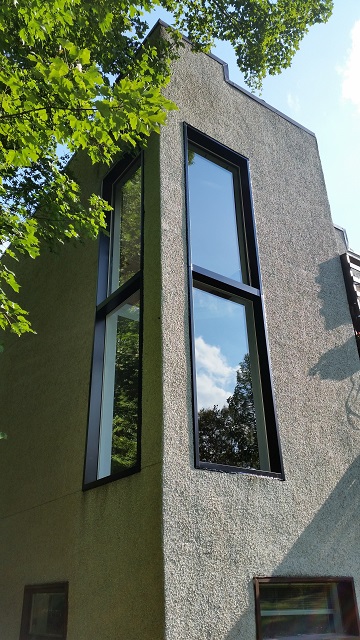 Choosing the Right Windows for
Curb Appeal
Choosing the Right Windows for
Curb Appeal
A variety of structural and landscape elements can increase the overall
curb appeal of a commercial or residential building. Commonly, property owners
opt to achieve this through decorative improvements such as gardening,
stylistic changes to architectural components and the addition of artistic
elements. Upgrading a property to increase curb appeal can be a costly and
complicated process. Landscaping can be high-maintenance, and structural
changes can be difficult to implement and typically have no impact on the
functionality of the components. One cost-effective way to improve upon curb
appeal is to upgrade window units. Industry experts can provide excellent
information on what styles are best suited for a given setting as well as
remove a property owner’s burden to install the fenestration systems.
Window Styles, Functions, Advantages
and Disadvantages
There are numerous window styles that are commonly used in commercial
and residential structures, all of which have distinct appeals, functions, and
pros and cons. The following list of window styles are commonly used in modern
buildings:
- Awning: This style
of unit is hinged horizontally along the top edge of the frame and opens
outward like an awning.
- Casement: Casement
windows are hinged vertically along one side edge and open outwards like a
door.
- Hopper: Similar to
the awning style, hopper windows are hinged along the bottom edge of the
frame and open in the opposite direction compared to the awning style.
Awning, casement
and hopper styles, which all close by pressing the sash against the frame, are
typically ideal for preventing air leakage, which in turn can reduce energy
costs and are thus economical options.
- Single-hung sash:
This style of fenestration unit has two vertically aligned sashes. Typically,
the bottom sash opens by sliding upwards.
- Double-hung sash:
Similarly aligned like the single-hung variation, both sashes of the
double-hung style can open, with the bottom sash sliding up and the top
sash sliding down. The two sashes may not be equally sized, which can be a
factor to consider for curb appeal.
- Horizontal sliding
sash: This style of window typically consists of two or more sashes that
slide horizontally. The sashes overlap one another.
Sliding windows
are typically more prone to air leakage compared to the hinged styles listed
above.
The Benefits of Insulated
Glazing to Curb Appeal
In addition to the above listed styles, potential buyers should also
consider using insulated glazing for window replacements and upgrades.
Insulated glazing is an updated fenestration technology that eliminates the
need for window screens and storm windows. For older window systems, screens
are added in the summertime to keep out animals and insects from entering a
building through the window, and storm windows are installed to increase
insulation. Both additions must be changed seasonally, which can be difficult
for upper storeys, as the screens and storm windows attach to the exteriors of
windows. Insulated glazing is manufactured with two or three panes of glass
with air or gas between the panes for improved air insulation, and they can be
installed from the interior of the building.
The added ease of installation, combined with the elimination of
unsightly screens and storm windows, as well as the potential reduction in
energy costs, make window replacements a great choice for improving curb
appeal. Trust Windows will provide a one-stop-shop solution to your needs.
Trust Windows specialize in taking you from start to finish, providing in home
estimates, manufacturing of the windows and full installation.